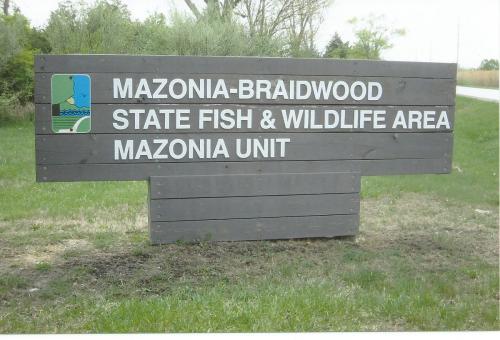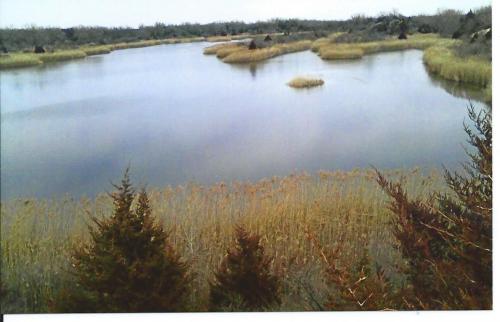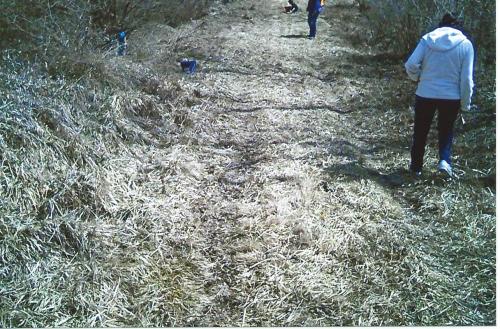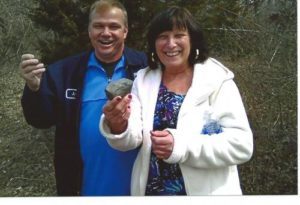By Preservation Chairman, John Weiss
The towns of Braceville and Godley border one of the best areas for fossil hunting in the state. Collectors come from all around the country. This area is famous because it was here that the Tully Monster fossil was discovered. This long extinct creature is named for the man who found it in 1957, Francis Tully. The Tully Monster is also considered to be the official State of Illinois Fossil.

The best place to easily find common fossils is away from the popular fish and wildlife area. Some places here are so abundant with fossils that no digging is even required. Maps for the entire area are readily available at the visitor center of the Mazonia State Fish & Wildlife Area just off of Route 66. There are help-yourself boxes with trail maps in front of the facility.
The trail we took was 6 miles long through some beautiful areas that went completely around Lake Ponderosa. At about the half way point around the lake the loose stones are in great abundance. Jellyfish and Shrimp fossils are laying everywhere. To easily find this area leave Route 66 at Godley by the Mining Museum. Travel through town on Kankakee St. to 5000 N Rd., and turn left. Travel about one mile on this rough gravel road to the second pull-in parking area on the right side. Then travel farther in to the interior parking area.

Don’t worry, the walking trail is rough but you won’t get lost. Our group was of all ages and none of us had any concerns and we made it just fine. Remember that the trails are not paved, and there are no washrooms and no water, so plan accordingly. Bring a shoulder strap style bag to carry your rocks in. Be aware that big stones tend to get heavy on a long walk.

The reason this area is so abundant with fossils is because of all the strip mining that occurred here in the 1800’s and early 1900’s. This area millions of years ago was under water. Throughout the years this area dried out. However, rich veins of coal were in abundance near the surface of the land. So during the 1800s strip mining methods were used to extract the coal. In strip mining, the top layers of soil are removed to expose the veins of coal. This scraped-off top soil is now referred to as slag heaps. Many places now are hilly areas of slag surrounding lakes created where the coal was removed. Laws in the early days did not require the slag to be put back into the holes created from the coal removal. As a result the bottom of ancient oceans are readily available to all who are adventuresome enough to seek out this unique nature site.

Jamie Anderson and his friend Rose
Fossil hunting is allowed here from March 1st to September 30th.